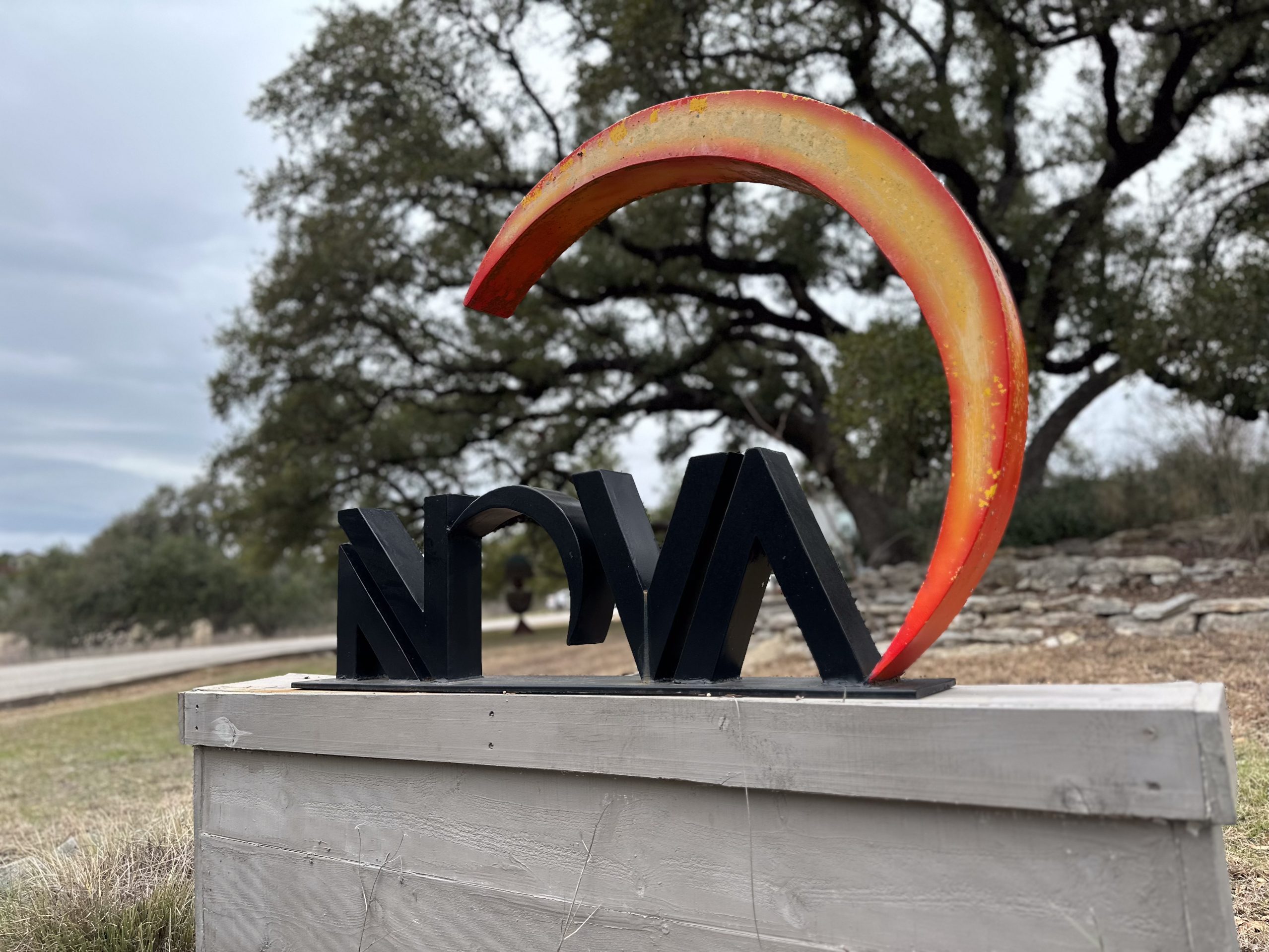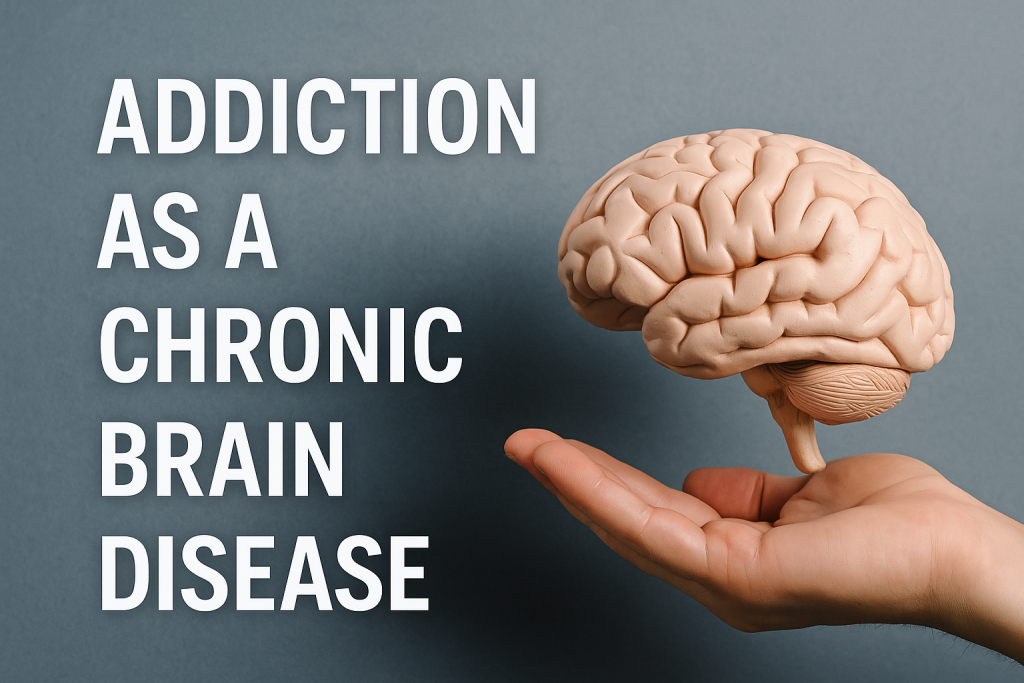Last Updated on October 20, 2025
Addiction as a Chronic Brain Disease: Understanding the Science, Treatment, and Hope
At a Glance: Addiction as a Chronic Brain Disease
- Addiction is recognized as a chronic brain disease, not just a lack of willpower.
- Substance abuse alters the brain’s reward system, affecting behavior, decision-making, and impulse control.
- Evidence-based treatments—including medical detox, behavioral therapy, and long-term rehab—are essential for recovery.
- Hope and healing are possible through a continuum of care that supports physical, mental, and emotional health.
- Understanding addiction as a medical condition reduces stigma and encourages people to seek professional help.
Table of Contents
For many years, people debated whether addiction was simply a matter of choice or a deeper health issue. Today, leading medical organizations like the National Institute on Drug Abuse (NIDA) and the American Medical Association (AMA) classify addiction as a chronic brain disease. This shift in understanding has changed how society views those who struggle with substance use. Instead of moral weakness, addiction is now recognized as a condition that affects brain structure and function, much like diabetes or heart disease.










In this blog, we’ll explore what it means to call addiction a brain disease, how it affects the brain, the evidence behind the disease model of addiction, and the hope that comes with effective treatment.
Why People Say Addiction Is a Disease
When people say addiction is a disease, they are referring to the biological changes that drugs and alcohol cause in the brain. Substances overstimulate the brain’s reward pathways, releasing large amounts of dopamine — the chemical responsible for feelings of pleasure and motivation. Over time, the brain adapts by reducing natural dopamine production, making it harder to feel joy without substances.
This means that someone with addiction isn’t simply choosing drugs or alcohol; their brain is rewired to crave them. This is why relapse is common and why willpower alone is rarely enough to achieve long-term recovery.
Addiction and the Brain: How It Works
The brain is made up of different regions that control behavior, memory, judgment, and emotions. Addiction hijacks these systems in the following ways:
- Reward Circuit (Nucleus Accumbens): Drugs overstimulate this area, reinforcing the urge to use substances again and again.
- Prefrontal Cortex: Responsible for decision-making, this region becomes impaired, making it difficult to resist cravings.
- Amygdala and Hippocampus: These areas create emotional memories linked to drug use, which can trigger relapse even after years of sobriety.
This understanding supports the disease concept of addiction: once the brain is altered, recovery requires treatment, not punishment.
Freedom Starts Here. Take Back Your Life Today.
Same-Day Admissions in Austin Available.
Is Addiction a Chronic Disease?
Yes. Addiction is considered a chronic disease because it is long-lasting and has the potential for relapse. Just like hypertension or asthma, addiction often requires ongoing management. According to NIDA, relapse rates for addiction (40–60%) are similar to those of other chronic illnesses like diabetes.
This does not mean recovery is impossible. Instead, it highlights the need for continuous care, monitoring, and adjustment of treatment plans.
The Disease Model of Addiction
The disease model of addiction argues that addiction is not a lack of willpower but a medical condition requiring treatment. It emphasizes three key points:
- Biological Basis: Addiction alters brain function, particularly in areas related to decision-making and self-control.
- Chronic Nature: Like other diseases, it persists over time and can relapse if untreated.
- Treatment Focus: Effective care often combines medical detox, behavioral therapy, and sometimes medication-assisted treatment (MAT).
This model has shaped modern rehab programs and reduced stigma by reframing addiction as a health issue instead of a moral failing.
Is Addiction Really a Disease? Addressing Doubts
Some people still ask, “Is addiction really a disease?” This skepticism often comes from the visible behaviors associated with substance use, such as lying or neglecting responsibilities. However, brain imaging studies clearly show that addiction causes measurable changes in brain structure and function.
The American Psychiatric Association (APA) includes substance use disorders in the Diagnostic and Statistical Manual of Mental Disorders (DSM-5), further confirming its classification as a brain disorder.
When Was Addiction Classified as a Disease?
The American Medical Association (AMA) officially recognized alcoholism as a disease in 1956, and in 1987, it extended that recognition to all forms of addiction. Since then, organizations like the World Health Organization (WHO) and NIDA have reinforced this classification.
This shift has influenced public health policies, insurance coverage for treatment, and the expansion of rehabilitation centers across the U.S.
Treatment Approaches for Addiction as a Brain Disease
If addiction is a brain disease, treatment must address both physical and psychological aspects. The most effective programs often include:
1. Detoxification
Supervised detox helps the body safely eliminate drugs or alcohol. This first step addresses physical dependence.
2. Behavioral Therapies
- Cognitive Behavioral Therapy (CBT): Helps individuals recognize and change thought patterns that lead to substance use.
- Motivational Interviewing (MI): Strengthens personal motivation to pursue recovery.
3. Medication-Assisted Treatment (MAT)
MAT uses FDA-approved medications like buprenorphine, methadone, or naltrexone to manage cravings and withdrawal. This is especially effective for opioid and alcohol addiction.
4. Long-Term Rehab and Sober Living
Because addiction is chronic, long-term rehab programs (90 days or more) paired with sober living homes provide ongoing support.
Local Perspective: Addiction Treatment in Austin, Texas
In Austin, substance abuse continues to be a pressing issue. According to the Texas Health and Human Services Commission, opioid-related deaths in Travis County have steadily risen over the past decade.
Local rehab facilities, including Nova Recovery Center, provide a full continuum of care, from detox to outpatient programs. With access to therapy, peer support, and community-based recovery groups, Austin residents have effective options for addressing addiction as a chronic brain disease.
We Can Help Today
Understanding addiction as a chronic brain disease removes blame and replaces it with compassion and science. While recovery requires dedication, the right treatment makes it possible to live a healthy, fulfilling life. By acknowledging the disease model, society can reduce stigma and expand access to care for millions of people affected by addiction.
FAQ: Addiction as a Chronic Brain Disease
People say addiction is a disease — what does that mean?
It means that addiction changes the brain’s chemistry and structure, making it a chronic medical condition rather than a choice.
What are some articles about addiction and brain science?
Research from the National Institute on Drug Abuse (NIDA), the World Health Organization (WHO), and the American Psychiatric Association (APA) provide scientific evidence about addiction as a brain disease.
How is addiction a chronic brain disease?
Drugs and alcohol alter brain regions that control decision-making, impulse regulation, and reward, leading to long-lasting changes that drive compulsive use.
Is addiction really a disease, or is it just bad behavior?
Scientific consensus confirms that addiction is a disease. Brain scans show physical changes caused by substance use, which explains why quitting is so difficult without treatment.
When was addiction classified as a disease?
The AMA classified alcoholism as a disease in 1956 and expanded this definition to all addictions in 1987.
What is the disease model of addiction?
The disease model of addiction explains that addiction is a medical condition with biological causes, chronic relapse potential, and treatment-based solutions.
Other Drug and Alcohol Rehab Locations
Medical Disclaimer
The information provided on this page is for educational purposes only and should not be used as a substitute for professional medical advice, diagnosis, or treatment. Addiction is a complex medical condition that requires proper evaluation and care from licensed healthcare providers. Do not attempt to self-diagnose, manage, or stop substance use on your own without medical guidance. If you are experiencing severe withdrawal symptoms, a medical emergency, or thoughts of self-harm, call 911 in the United States right away. For immediate mental health support, you can dial 988 to connect with the Suicide & Crisis Lifeline, available 24/7.
Nova Recovery Center Editorial Guidelines
By instituting a policy, we create a standardized approach to how we create, verify, and distribute all content and resources we produce. An editorial policy helps us ensure that any material our writing and clinical team create, both online and in print, meets or exceeds our standards of integrity and accuracy. Our goal is to demonstrate our commitment to education and patient support by creating valuable resources within our realm of expertise, verifying them for accuracy, and providing relevant, respectful, and insightful data to our clients and families.


